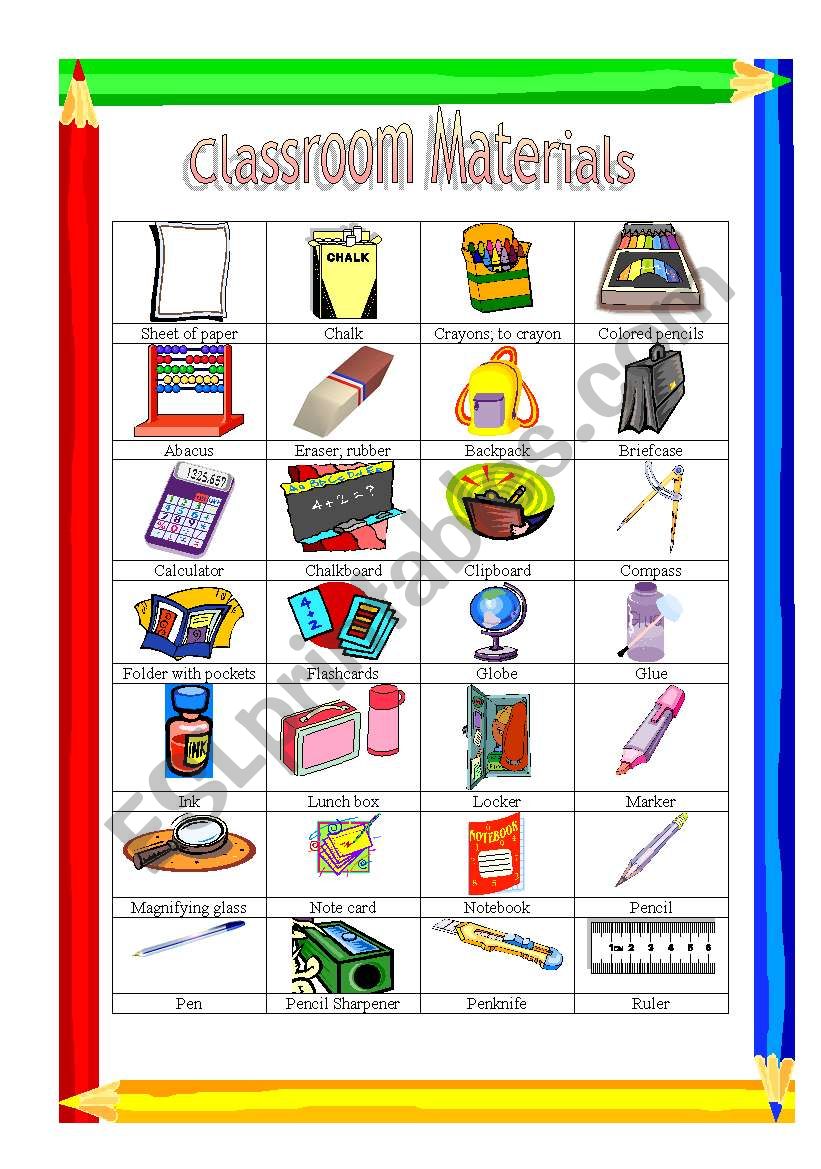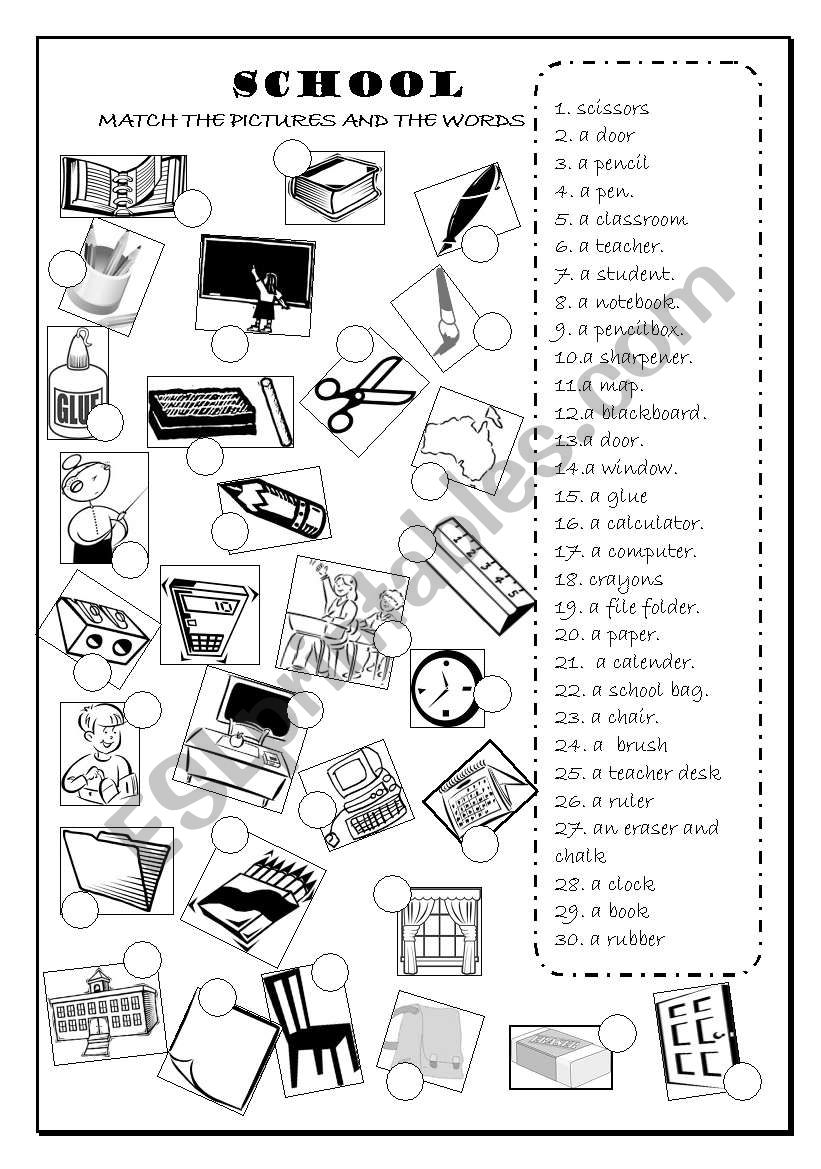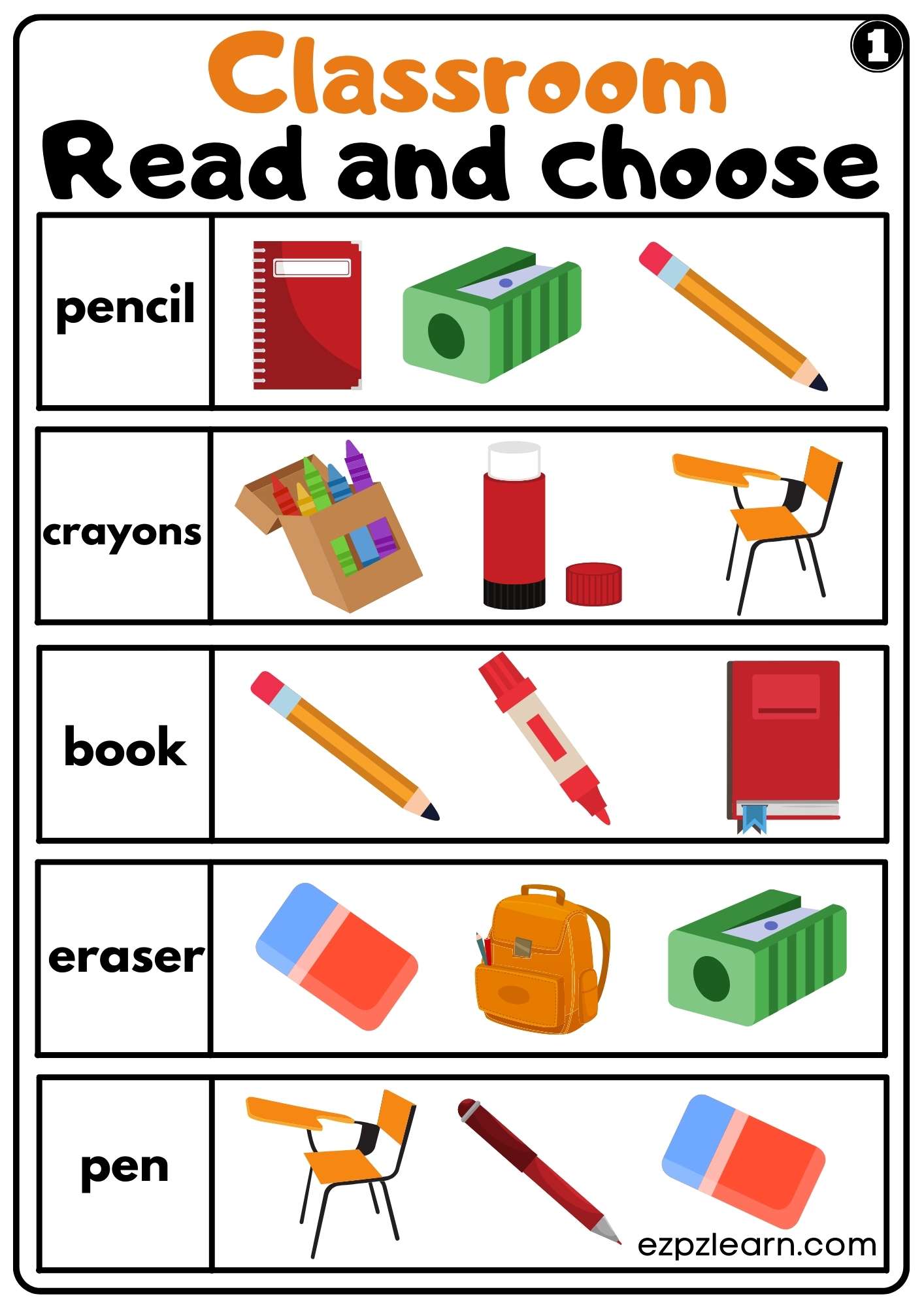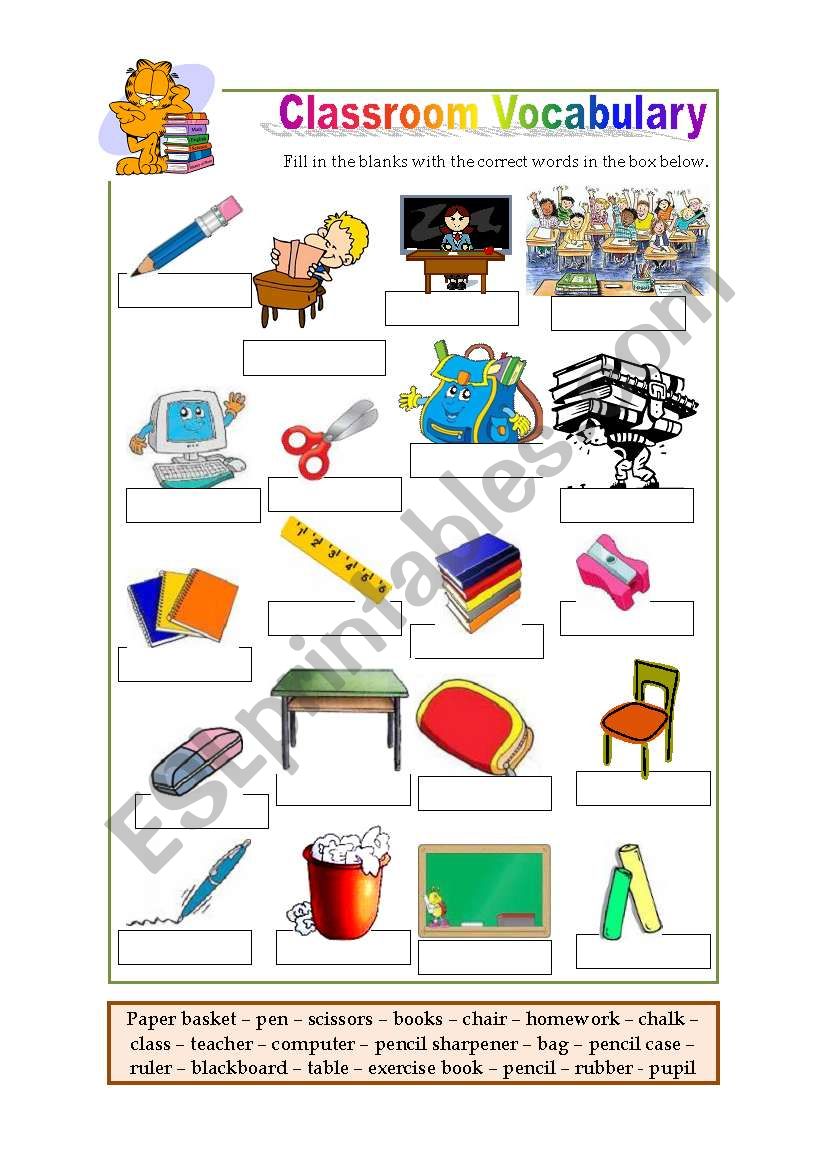
Unlocking Potential: A Comprehensive Guide to Effective ESL Classroom Materials Worksheets
In the dynamic and ever-evolving landscape of English as a Second Language (ESL) education, teachers are constantly seeking innovative and effective tools to facilitate learning. Among the myriad resources available, ESL classroom materials worksheets stand out as an indispensable cornerstone. Far from being mere paper-based exercises, well-designed worksheets serve as versatile instruments for reinforcing concepts, practicing skills, assessing understanding, and engaging learners across all proficiency levels. This comprehensive guide delves into the multifaceted role, benefits, design principles, and integration strategies of ESL classroom materials worksheets, highlighting their enduring relevance in modern language pedagogy.
The Indispensable Role of Worksheets in ESL Education
The ESL classroom is a microcosm of diverse learners, each with unique learning styles, paces, and prior knowledge. Worksheets offer a structured yet flexible approach to address this diversity. They provide a tangible means for students to interact with the language independently, consolidating what they have learned in direct instruction.

Key Benefits of ESL Classroom Materials Worksheets:

- Reinforcement and Practice: Worksheets provide the crucial repetition necessary for language acquisition. Students can practice grammar rules, vocabulary, and sentence structures multiple times, solidifying their understanding.
- Individualized Learning: Learners can work at their own pace, allowing advanced students to move quickly and those needing more time to proceed without feeling rushed. This also enables teachers to differentiate instruction by assigning varied worksheets based on individual needs.
- Assessment and Feedback: Worksheets serve as formative assessment tools, allowing teachers to quickly gauge student comprehension and identify areas where further instruction is needed. They also provide a clear basis for providing targeted feedback.
- Structure and Routine: For many ESL learners, especially those from different educational backgrounds, the predictable structure of worksheets can be comforting and help establish a classroom routine.
- Engagement and Motivation: While often perceived as traditional, creatively designed worksheets with engaging visuals, varied tasks, and real-world relevance can significantly boost student motivation and make learning enjoyable.
- Development of Key Skills: From reading comprehension and listening practice to writing mechanics and critical thinking, worksheets can be tailored to target a wide array of language skills.




Types of ESL Classroom Materials Worksheets
The versatility of ESL classroom materials worksheets is evident in the sheer variety of forms they can take, each designed to target specific language domains:

-

Grammar Worksheets:
- Fill-in-the-blanks: Practicing verb tenses, prepositions, articles, conjunctions.
- Sentence Transformation: Changing active to passive voice, direct to reported speech, or affirmative to negative sentences.
- Error Correction: Identifying and correcting grammatical mistakes in given sentences or paragraphs.
- Sentence Scrambles: Rearranging words to form grammatically correct sentences.

-
Vocabulary Worksheets:
- Matching: Connecting words to their definitions, synonyms, antonyms, or corresponding images.
- Crosswords and Word Searches: Fun ways to reinforce new vocabulary.
- Gap-fill: Using context clues to complete sentences with appropriate vocabulary words.
- Categorization: Grouping words by theme (e.g., food, emotions, occupations).
-
Reading Comprehension Worksheets:
- Multiple Choice Questions: Testing understanding of main ideas, specific details, or inferences.
- True/False/Not Given: Assessing factual recall and understanding of implied information.
- Short Answer Questions: Encouraging students to formulate their own responses based on the text.
- Sequencing: Ordering events from a story or steps in a process.
-
Listening Comprehension Worksheets:
- Gap-fill: Completing sentences or dialogue while listening to an audio track.
- Note-taking: Guiding students to extract key information from a spoken passage.
- True/False: Assessing understanding of spoken details.
- Drawing/Diagramming: Following spoken instructions to draw a picture or complete a diagram.
-
Writing Worksheets:
- Sentence Starters/Prompts: Providing a beginning for students to continue a story or paragraph.
- Guided Writing: Offering frameworks or outlines for different text types (e.g., email, letter, descriptive paragraph).
- Picture Prompts: Using images to inspire creative writing.
- Paragraph/Essay Outlines: Helping students structure their longer written pieces.
-
Speaking & Pronunciation Worksheets:
- Discussion Questions: Prompts for pair or group discussions on a given topic.
- Role-play Scenarios: Providing scripts or situations for students to act out.
- Minimal Pairs Practice: Focusing on distinguishing between similar-sounding words.
- Intonation/Stress Marking: Exercises to practice correct pronunciation patterns.
Principles of Effective Worksheet Design
The true power of ESL classroom materials worksheets lies not just in their existence, but in their thoughtful design. A poorly designed worksheet can confuse, frustrate, and demotivate learners. Conversely, a well-crafted one can transform a challenging concept into an accessible and enjoyable learning experience.
- Clarity and Simplicity: Instructions must be unambiguous, concise, and written in language appropriate for the students’ proficiency level. Use clear fonts, adequate spacing, and avoid clutter.
- Appropriate Difficulty Level: Worksheets should be challenging enough to promote learning but not so difficult as to cause discouragement. Scaffold activities, moving from controlled practice to freer production.
- Relevance and Authenticity: Connect the content to real-world scenarios or topics relevant to students’ lives and interests. Authentic materials (adapted newspaper articles, advertisements, song lyrics) can make worksheets more engaging.
- Variety and Engagement: Incorporate different task types within a single worksheet or across a series of worksheets to maintain interest. Use visuals (images, charts, diagrams) to support comprehension and add appeal.
- Clear Learning Objectives: Each worksheet should have a clear purpose. What specific skill or concept is it designed to reinforce or assess? This guides both the teacher’s instruction and the student’s focus.
- Ample Space for Answers: Ensure there is enough room for students to write their responses neatly without feeling cramped.
- Teacher Answer Key (for self-correction): For certain types of worksheets, providing an answer key allows students to self-correct and learn from their mistakes immediately, fostering autonomy.
Integrating Worksheets into the ESL Classroom
Worksheets are most effective when integrated thoughtfully into the broader lesson plan, rather than being used in isolation.
- Before the Lesson (Pre-learning/Activation): Use a short worksheet to activate prior knowledge, introduce new vocabulary, or gauge what students already know about a topic.
- During the Lesson (Guided Practice): After introducing a new concept, use a worksheet for guided practice, where students work individually, in pairs, or small groups, with the teacher available for support. This allows immediate application of newly learned material.
- After the Lesson (Independent Practice/Homework/Assessment): Assign worksheets for homework to consolidate learning, or use them as a formative assessment to check comprehension before moving to a new topic. They can also serve as review materials for quizzes or tests.
- Differentiated Instruction: Prepare multiple versions of a worksheet, varying the difficulty level or task complexity, to cater to students at different proficiency levels within the same class.
- Blended Learning: Many traditional worksheets can be adapted into interactive digital formats using online platforms, allowing for immediate feedback and multimedia integration.
Overcoming Challenges and Best Practices
While highly beneficial, teachers should be mindful of potential pitfalls when using worksheets:
- Avoid Overuse: Too many worksheets can lead to boredom and a perception of monotonous learning. Balance worksheet activities with communicative tasks, games, and projects.
- Make Them Interactive: Encourage students to work collaboratively on worksheets. Pair work or group work fosters peer learning and discussion.
- Provide Timely and Constructive Feedback: Don’t just mark answers right or wrong. Provide specific feedback on errors and guide students toward correction and understanding.
- Adapt and Create: Don’t hesitate to modify existing worksheets to better suit your students’ needs, interests, or the specific curriculum. Better yet, empower yourself to create your own bespoke materials. Many teachers find satisfaction and greater effectiveness in designing their own ESL classroom materials worksheets.
The Digital Evolution of ESL Classroom Materials Worksheets
The digital age has brought a new dimension to ESL classroom materials worksheets. While traditional printables remain invaluable, interactive online platforms and digital tools offer exciting possibilities:
- Online Repositories: Websites like ESL-Library, Bogglesworld ESL, and Teachers Pay Teachers offer vast collections of downloadable and often editable worksheets.
- Interactive Worksheet Creators: Tools like Liveworksheets, Wordwall, and Google Forms allow teachers to transform static worksheets into dynamic, self-correcting online exercises. These can incorporate audio, video, and various interactive elements.
- Gamification: Platforms like Quizlet, Kahoot, and Gimkit can turn vocabulary or grammar practice into engaging, competitive games based on worksheet content.
- Accessibility: Digital worksheets can be easily shared, accessed on various devices, and adapted for students with special learning needs (e.g., text-to-speech, larger fonts).
- Sustainability: Digital worksheets reduce paper consumption, aligning with environmentally conscious practices.
Conclusion
ESL classroom materials worksheets have proven their enduring value as a cornerstone of effective language teaching. From providing structured practice and reinforcing concepts to facilitating assessment and fostering independent learning, their utility is undeniable. By understanding the diverse types available, adhering to principles of effective design, and integrating them strategically into lesson plans, educators can harness the full potential of these powerful tools. As technology continues to advance, the evolution of digital worksheets promises even greater flexibility, interactivity, and engagement, ensuring that this humble yet mighty resource remains at the forefront of empowering English language learners worldwide.
